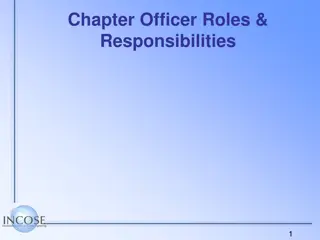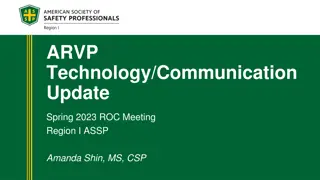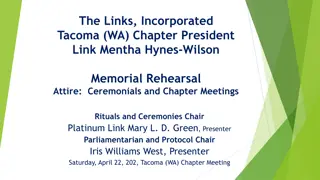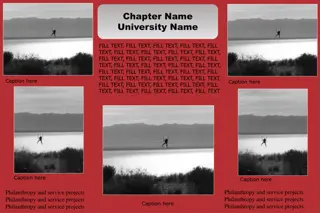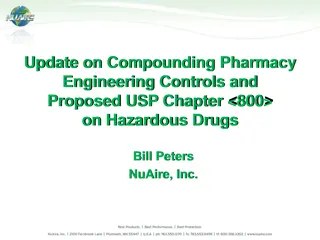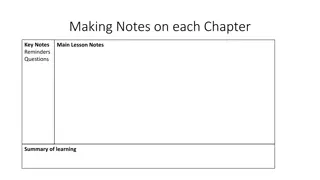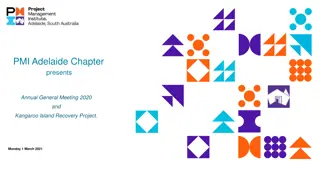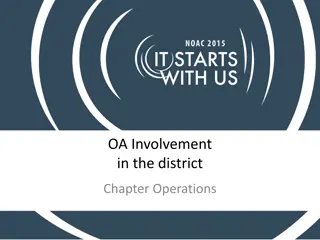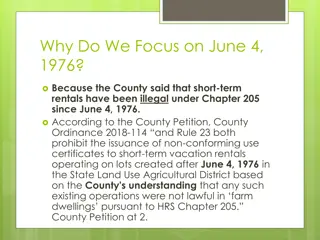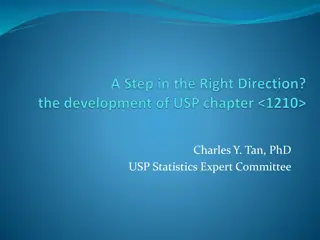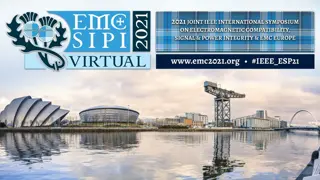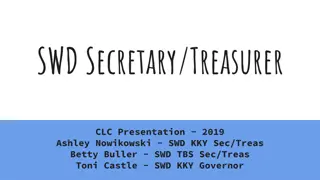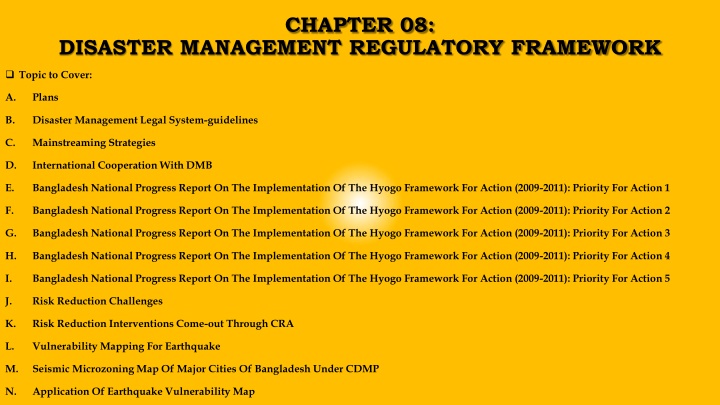
Disaster Management Regulatory Framework in Bangladesh: Plans, Legal System, and International Cooperation
Explore the disaster management regulatory framework in Bangladesh, including disaster management plans, legal system guidelines, mainstreaming strategies, and international cooperation with key organizations. Learn about the implementation of the Hyogo Framework for Action and risk reduction interventions for earthquake vulnerability.
Download Presentation

Please find below an Image/Link to download the presentation.
The content on the website is provided AS IS for your information and personal use only. It may not be sold, licensed, or shared on other websites without obtaining consent from the author. If you encounter any issues during the download, it is possible that the publisher has removed the file from their server.
You are allowed to download the files provided on this website for personal or commercial use, subject to the condition that they are used lawfully. All files are the property of their respective owners.
The content on the website is provided AS IS for your information and personal use only. It may not be sold, licensed, or shared on other websites without obtaining consent from the author.
E N D
Presentation Transcript
CHAPTER 08: DISASTER MANAGEMENT REGULATORY FRAMEWORK Topic to Cover: A. Plans B. Disaster Management Legal System-guidelines C. Mainstreaming Strategies D. International Cooperation With DMB E. Bangladesh National Progress Report On The Implementation Of The Hyogo Framework For Action (2009-2011): Priority For Action 1 F. Bangladesh National Progress Report On The Implementation Of The Hyogo Framework For Action (2009-2011): Priority For Action 2 G. Bangladesh National Progress Report On The Implementation Of The Hyogo Framework For Action (2009-2011): Priority For Action 3 H. Bangladesh National Progress Report On The Implementation Of The Hyogo Framework For Action (2009-2011): Priority For Action 4 I. Bangladesh National Progress Report On The Implementation Of The Hyogo Framework For Action (2009-2011): Priority For Action 5 J. Risk Reduction Challenges K. Risk Reduction Interventions Come-out Through CRA L. Vulnerability Mapping For Earthquake M. Seismic Microzoning Map Of Major Cities Of Bangladesh Under CDMP N. Application Of Earthquake Vulnerability Map
B. DISASTER MANAGEMENT LEGAL SYSTEM-GUIDELINES 1. Disaster Impact and Risk Assessment Guideline 2. Local Disaster Risk Reduction Fund Management Guidelines 3. Emergency Fund Management Guidelines 4. Indigenous Coping Mechanism Guidebook 5. Community Risk Assessment Guidelines 6. Damage and Needs Assessment Methodology 7. Hazard Specific Risk Assessment Guidelines 8. Emergency Response and Information Management Guideline 9. Contingency Planning Template 10. Sectoral Disaster Risk Reduction Planning Template To be Continue
B. DISASTER MANAGEMENT LEGAL SYSTEM-GUIDELINES 11. Local Level Planning Template 12. National Risk Reduction Fund Management Guideline 13. National Disaster Reduction & Emergency Fund Management Guideline 14. Local Disaster Management Fund Guideline 15. Guideline for road and water safety 16. Guideline for industrial safety 17. Guideline for Disaster Shelter Management 18. Monitoring and Evaluation Guideline for the Implementation of the Plan 19. Guideline for international Assistance in disaster emergency
D. INTERNATIONAL COPERATION WITH DMB Chair, SDMC (SARRC Disaster Management Centre). Focal Point, HFA Progress Monitoring and Reporting. Development of close collaboration with ARF Member States, Asian Disaster Preparedness Centre (ADPC) of Thailand, Asian Disaster Reduction Centre (ADRC) of Japan, Federal Emergency Management Agency(FEMA) of America, Institute of Disaster Risk Management (IDRM) of Philippines, Emergency Management of Australia etc.
E. BANGLADESH NATIONAL PROGRESS REPORT ON THE IMPLEMENTATION OF THE HYOGO FRAMEWORK FOR ACTION (2009-2011): PRIORITY FOR ACTION 1 Ensure that disaster risk reduction is a national and a local priority with a strong institutional basis for implementation PROGRESS: A new division established to deal with disaster management affairs exclusively named Disaster Management & Relief Division (DMRD). National Disaster Management Plan (2010-2015) approved in April, 2010 linked with Vision 2021 and 6th Five Year Plan. Revised Standing Orders on Disaster ( SOD ), which explicitly outlined the DRR & CCA business for GO, NGO, public representatives & citizens. National Disaster Management Act has already approved by the cabinet.
F. BANGLADESH NATIONAL PROGRESS REPORT ON THE IMPLEMENTATION OF THE HYOGO FRAMEWORK FOR ACTION (2009-2011): PRIORITY FOR ACTION 2 Identify, assess and monitor disaster risks and enhance early warning PROGRESS: Updating of the risk assessment 12 guidelines in revised SOD. Specific Sectoral Disaster Risk Reduction guidelines develops by CDMP. Detailed risk assessment mapping for earthquake and tsunami for three cities Dhaka, Chittagong & Sylhet prepared and planned for new eight cities. DRR budget now 4.5% of national Budget. Climate Change Fund (CCF ) US $ 100m/Year. Bangladesh Climate Change Resilience Fund ( BCCRF ) US $ 110m. Resource allocation increased to all line ministries towards DRR. Development Partners support increases towards national DRR initiatives.
G. BANGLADESH NATIONAL PROGRESS REPORT ON THE IMPLEMENTATION OF THE HYOGO FRAMEWORK FOR ACTION (2009-2011): PRIORITY FOR ACTION 3 Use knowledge, innovation and education to built a culture of safety and resilience at all levels PROGRESS: Bangladesh DM Education Research and Training ( BDMERT ) established. Key ministries, research institutions and civil society organization established website for sharing of disaster related knowledge. DMIC established network with 64 Districts HQ and planned to expand to all 483 upazilas by 2012. BMD. FFWC, CPP, BTV, Radio, mobile phone companies & Other electronic and print media contributing significantly in dissemination of early warning and disaster Messages. Disaster & climate risk information are included in text book from elementary to higher secondary level. DRR education & special course in universities, institutions, armed forces division, civil service college etc.
H. BANGLADESH NATIONAL PROGRESS REPORT ON THE IMPLEMENTATION OF THE HYOGO FRAMEWORK FOR ACTION (2009-2011): PRIORITY FOR ACTION 4 Reduce the underlying risk factors PROGRESS: National Adaptation Program of Action ( NAPA) & Bangladesh Climate Change Strategy & Action Plan has already prepared. Bilateral & multilateral donors exploring the possibilities of creating multi-donor trust fund to accelerate financing for research and adaptation. Climate change Cell established and focal points identified for each ministries. DRR & CCA link developed with the introduction of various program launched by different ministries i.e. sustainable land management program, climate resilience crop verities, cyclone resistance house etc. Strong institutional arrangement for implementing social protection program. National committee for updating national building code, land use plan. Disaster risk reduction & EIA for all development projects.
I. BANGLADESH NATIONAL PROGRESS REPORT ON THE IMPLEMENTATION OF THE HYOGO FRAMEWORK FOR ACTION (2009-2011): PRIORITY FOR ACTION 5 Strengthen disaster preparedness for effective response at all levels PROGRESS: National Plan for DM, DM Act, SOD mentioned tasks for all sectoral safety preparedness. For existing structure, retrofitting techniques are being introduced to combat earthquake. Mock drill guidelines for school and hospitals safety. Earthquake contingency developed for AFD, FSCD, DGHS & DRR. 30,000 members of local DMCs imparted training on comprehensive DM. DMB established damage, loss and need assessment cell. 60,000 volunteer are working 13 cyclone prone district. Search and rescue equipment. Adequate reserve of relief materials in each district.
J. RISK REDUCTION CHALLENGES Early warning with adequate lead time in community language. Expansion of the operation areas of the Cyclone. Preparedness Programs (CPP). Develop similar program for flood prone areas. Develop Urban Volunteers for post- Earthquake response. Ensure Cyclone/flood shelters for all vulnerable people. Resilient embankment, green belt along the coast. Expansion of disaster management information network. Mainstreaming disaster risk reduction and climate change adaptation in development process. Poverty reduction, increase resilience, shifting risks (e.g. insurance). Strengthening linkage with regional and international organizations involved in DRR in line with Hyogo Framework for Action.
M. SEISMIC MICROZONING MAP OF MAJOR CITIES OF BANGLADESH UNDER CDMP
N. APPLICATION OF EARTHQUAKE VULNERABILITY MAP Preparation of earthquake contingency plan for national, city corporation and major agencies based on vulnerability map. Preparation of spatial plans (maps) for search, rescue and evacuation. Capacity building of major responding organizations based on risk assessment through training, advocacy and awareness activities.

